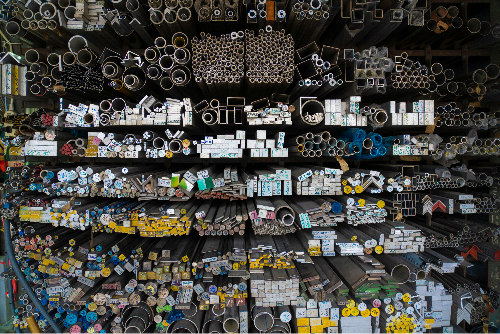The Untapped Potential of a Construction Hub: Reducing Not Only Building Materials but Also Personnel Transportation
- news and press

- Dec 16, 2024
- 3 min read
Updated: Jan 14
In the hustle and bustle of the city, where roads are often congested and space is a precious commodity, the logistics of construction projects are becoming increasingly challenging. As cities grow and infrastructure becomes more complex, the need for efficient construction logistics is paramount. A construction hub—a central point for managing construction materials—is often praised for reducing traffic movements by 73%. However, there’s another, less highlighted opportunity: drastically reducing the commuting traffic of construction personnel.
The Personnel Challenge
Urban projects are often located in densely populated areas where parking spaces are scarce. Construction workers frequently commute in private vehicles and need to bring their tools along, leading to congestion, illegally parked vehicles, and inefficient use of space—a source of frustration for both cities and construction companies. In a city like Amsterdam, with 160 major construction projects in its inner city, over 30,000 construction workers may be commuting daily. This places significant pressure on infrastructure.
Municipalities mandate that the parking of construction personnel must not add strain to the area. Shuttle services are often required, but they merely shift the parking issue to another location. How can this be addressed more effectively?

The Mobility Q-Construction Hub
A potential solution is the introduction of a "Mobility Q-Construction Hub": a centrally located facility on the city’s outskirts, integrated with a Q-Construction Hub. This serves as a starting point for both construction materials and personnel. The hub offers modern amenities, such as ample parking, changing rooms, and waiting areas. Workers park their vehicles here and then travel in groups, emission-free, to the construction site.
This approach immediately reduces the number of vehicles entering and leaving the city. It alleviates parking pressure in the inner city, avoids high parking fees, and eliminates the hassle of finding parking spots. Group transportation allows construction companies to efficiently ensure workers arrive on-site on time. Even if a builder already uses a shuttle service, grouping personnel—similar to consolidating building materials into full loads—can lead to significant cost and emission reductions. Outsourcing this transportation to a professional party simplifies the process and is often more cost-effective.
Smart Logistics Variations
With insights into construction sites and transportation movements, the most efficient transport solution can be easily calculated. Qonnected Logistics, an organization specializing in optimizing construction logistics, has the necessary data and expertise to efficiently transport both materials and personnel.
A construction hub doesn’t always need to serve as a parking location. Other sites, such as train stations on the city’s outskirts, can also act as pickup points, simplifying and streamlining the grouping of workers. In some cases, such as when hundreds of workers travel long distances daily, another construction hub or parking facility can serve as the starting point. Here too, emission-free transport to the city offers a viable solution.
Synergy with Urban Infrastructure
The use of hubs and group mobility benefits not only construction companies but also the city itself. Urban infrastructure is less strained as fewer individual vehicles enter the city, reducing traffic congestion, optimizing parking space usage, and improving urban livability. Residents, shoppers, and other city users benefit from this arrangement.
Furthermore, public transportation can seamlessly integrate with this system, ensuring that workers without private vehicles can also easily reach the hub. Electric group transport contributes to more sustainable urban traffic and lowers CO2 emissions—a crucial step toward a greener city.
The Future of Urban Logistics
The logistics of construction personnel illustrate how smart solutions can improve the dynamics of a city. The use of hubs and group mobility addresses the growing demand for efficiency in the construction sector and urban planning. In the future, this model could be further enhanced with technologies like automated vehicles and real-time route planning.
This innovative concept demonstrates that collaboration between cities, businesses, and transport organizations leads not only to more efficient logistics but also to a more sustainable and livable city. It’s a win-win scenario that contributes to a future where cities can both grow and thrive.
For more information or to arrange your shuttle service directly: www.qonnected-logistics.com (P+R)


_edited.png)
_edited.png)
_edited.png)


_edited.png)
_edited_edited.png)









_edited.png)



Comments